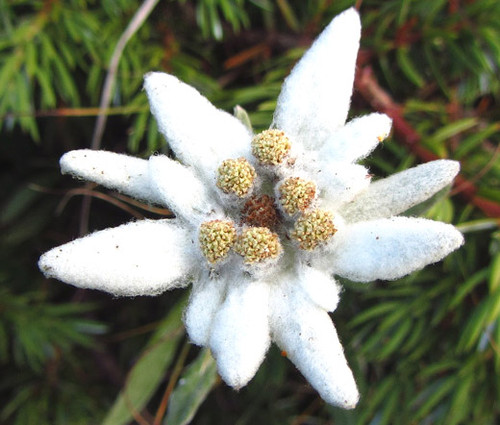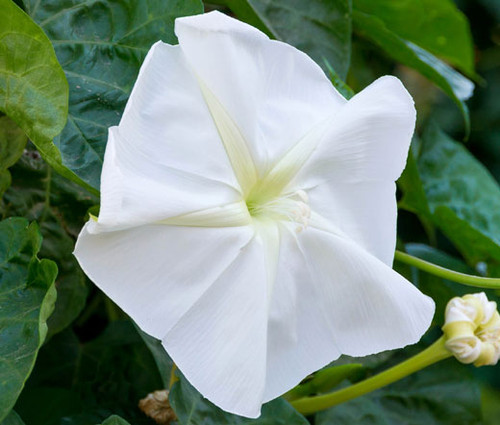Edelweiss Leontopodium Alpinum is a famous, short-lived, herbaceous perennial native to alpine areas of Europe. Edelweiss seeds can be sown indoors 4-6 weeks before last frost, so seedling can be transplanted outdoors when it is warmed. So called Edelweiss of the Alps is a clamping, woolly perennial wildflower with highly attractive gray-green foliage and small yellow flowers that seat on a top of showy, fluffy, white-woolly, bract-like leaves, and this highly attractive combination is shaped like a lion's paw so the genus name came from Greek leon (lion) and podion (foot) meaning lion's paw. Edelweiss starts to bloom in summer.
Edelweiss is an obvious choice for alpine and rock gardens, and other garden uses include container planting, ground cover planting, edging and border fronts. Leontopodium Alpinum seeds are small, so they should be just slightly pressed into the soil and not covered. The established Edelweiss likes to grow in full sun, and cool summer climates are preferable environment. The Edelweiss flowers are often used in fresh and dried flower arrangements, and as a herb Edelweiss is used in teas to treat various medical conditions. The Edelweiss extract is also can be found as an anti-aging and antioxidant component in cosmetic creams.
PLANT PROFILE
Season: Perennial
Height: 6-8 Inches
Bloom Season: Summer
Environment: Sun/Partial Shade
Soil Type: Average/Moist well-drained, pH 6.8-7.8
USDA Zones: 3-9
PLANTING INSTRUCTIONS
Sow Indoors: Winter/Spring (4-6 weeks before last frost)
Sow Outdoors: Spring/Fall
Seed Depth: Surface sowing - press seeds slightly into the soil
Germination Time: 21-35 Days








